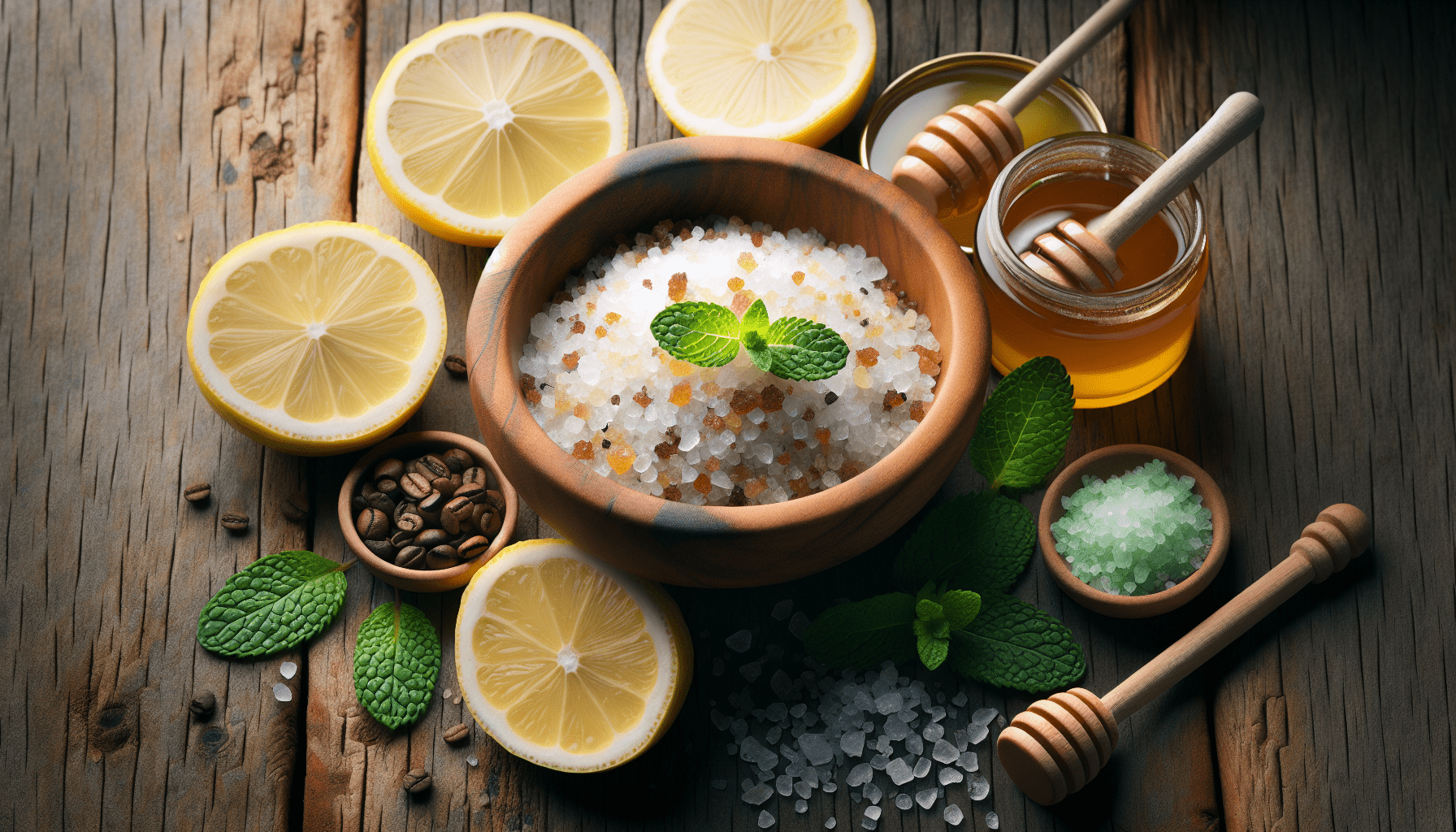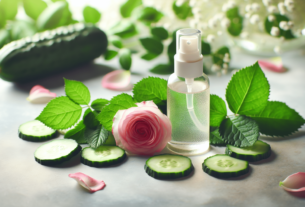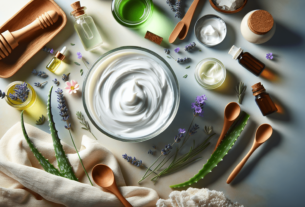Have you ever wondered how you can achieve smooth, radiant skin without relying on costly store-bought products laden with chemicals? You might be surprised to learn that some of the most effective skin care remedies are already in your kitchen or bathroom cabinet. Crafting your own natural exfoliants can be an enriching experience that combines creativity and self-care with the wonderful benefits of skincare customization.
Why Choose Natural Exfoliants?
Opting for natural exfoliants offers a myriad of benefits. Not only are they generally free from harmful chemicals and preservatives, but they also allow you to tailor your skincare routine to suit your specific needs. Whether your skin is sensitive, oily, or somewhere in between, a natural exfoliant can be customized to match your unique skin type.
Benefits to Your Skin
Exfoliating naturally gently removes dead skin cells, unclogs pores, and awakens vibrant, glowing skin. In addition to revealing youthful skin, regular exfoliation can enhance the absorption of other skincare products, making moisturizers and serums more effective. Natural exfoliants can be less abrasive, reducing the risk of irritation, redness, and breakouts commonly associated with synthetic alternatives.
Environmental and Health Advantages
By choosing natural exfoliants, you embrace a more sustainable approach to skincare. Many commercial exfoliants contain microbeads, small plastic particles that pollute waterways and harm marine life. In contrast, natural ingredients are biodegradable and eco-friendly. Moreover, these homemade solutions often forego synthetic fragrances, dyes, and preservatives, reducing the risk of skin sensitivities and allergic reactions.
Understanding the Basics of Exfoliation
Before getting into the specifics of ingredients and recipes, it’s essential to understand the exfoliation process and how it benefits your skin.
What is Exfoliation?
Exfoliation is the process of removing dead skin cells from the surface of your skin. This is an essential step in any skincare regimen because, over time, dead cells can build up, leaving your skin looking dull and feeling rough. Regular exfoliation keeps your complexion fresh and boosts skin cell turnover, leading to healthier skin.
Types of Exfoliation
Exfoliation can be broadly categorized into two types: physical and chemical. Natural exfoliants mainly focus on physical exfoliation but can also include mild chemical exfoliants like fruit enzymes.
- Physical Exfoliation: Involves the manual scrubbing of the skin using granular substances. Common natural choices include sugar, salt, and coffee grounds.
- Chemical Exfoliation: Utilizes natural acids or enzymes to gently dissolve dead skin cells without the need for scrubbing. Examples include beta hydroxy acids (BHAs) and alpha hydroxy acids (AHAs) found in fruits.
How Often Should You Exfoliate?
The ideal frequency for exfoliation depends on your skin type. Over-exfoliation can lead to irritation and damage, so it’s crucial to understand your skin’s needs.
- Sensitive Skin: Once a week
- Normal/Combination Skin: Two to three times a week
Selecting Ingredients for Your Natural Exfoliant
Crafting the perfect exfoliant starts with choosing the right ingredients. Natural ingredients are versatile and can cater to different skin types and concerns.
Base Ingredients
The base of your exfoliant will determine its texture and exfoliating power:
| Ingredient | Skin Type | Benefits |
|---|---|---|
| Sugar | All | Gentle exfoliation, dissolves quickly |
| Salt | Oily | Antibacterial properties, great for detoxifying |
| Oatmeal | Sensitive | Soothing, gentle enough for sensitive or irritated skin |
| Coffee Grounds | Combination | Stimulating, helps reduce the appearance of cellulite |
Additive Ingredients
Enhance your exfoliant with supplementary ingredients to boost its efficacy:
| Ingredient | Skin Type | Benefits |
|---|---|---|
| Honey | All | Moisturizing, antibacterial |
| Yogurt | All | Contains lactic acid for gentle chemical exfoliation |
| Aloe Vera Gel | Sensitive | Calming, hydrating |
| Essential Oils | All | Aromatherapy benefits, choose oils tailored to your needs |
Choosing Essential Oils
Essential oils can add a pleasing scent and additional benefits. For example, lavender oil is soothing, while tea tree oil can be beneficial for oily or acne-prone skin.
DIY Natural Exfoliant Recipes
Let’s put theory into practice with some easy-to-make exfoliant recipes. These can be adapted based on your personal preferences and skin needs.
Recipe 1: Soothing Oatmeal & Honey Exfoliant
This gentle exfoliant is perfect for sensitive skin, offering a soothing and hydrating experience.
Ingredients:
- 1/2 cup of finely ground oatmeal
- 2 tablespoons of honey
- 1 tablespoon of aloe vera gel
Instructions:
- Combine the oatmeal, honey, and aloe vera gel in a small bowl.
- Mix until a paste forms.
- Apply to your damp face, massaging in circular motions.
- Rinse with warm water and pat dry.
Recipe 2: Energizing Coffee & Sugar Scrub
Ideal for combination skin, this scrub not only exfoliates but also invigorates, leaving your skin feeling firm and refreshed.
Ingredients:
- 1/4 cup of coffee grounds
- 1/4 cup of granulated sugar
- 2 tablespoons of coconut oil (melted if solid)
- A few drops of peppermint essential oil
Instructions:
- In a bowl, mix the coffee grounds and sugar.
- Stir in the coconut oil until well combined.
- Add a few drops of peppermint essential oil.
- Gently massage onto damp skin in circular motions.
- Rinse thoroughly with warm water.
Recipe 3: Brightening Lemon & Salt Exfoliant
For a refreshing, detoxifying scrub that’s perfect for oily skin, this recipe uses salt and lemon to cleanse and invigorate your skin.
Ingredients:
- 1/2 cup of sea salt
- 3 tablespoons of olive oil
- Juice and zest of one lemon
Instructions:
- Combine the sea salt and olive oil in a bowl.
- Add the lemon juice and zest.
- Stir until all ingredients are well blended.
- Apply to the skin, massaging in a gentle circular motion.
- Rinse with cool water to close pores.
Tips for Effective Exfoliation
To get the most out of your exfoliating sessions, a few guidelines can ensure that you’re treating your skin with the utmost care and achieving optimal results.
Application Technique
- Gentle Pressure: Use gentle, circular motions to apply your exfoliant. Avoid applying too much pressure, as this can damage the skin.
- Target Areas: Focus on areas where dead skin tends to build up, such as elbows, knees, and the T-zone of your face.
Timing and Frequency
- Short Sessions: Limit each exfoliating session to a few minutes to prevent over-scrubbing.
- Moisturize After: Always follow up with a moisturizer to help lock in hydration and soothe the skin.
Patch Test
Before applying a new exfoliant, conduct a patch test on a small area of skin to ensure you don’t experience adverse reactions.
Understanding Exfoliation Myths
As you embark on your journey with natural exfoliants, it’s important to separate fact from fiction. Here’s a look at some common exfoliation myths.
Myth: More Scrubbing Equals Better Results
Over-exfoliating can damage your skin’s barrier, leading to irritation or increased sensitivity. Less is often more when it comes to effective exfoliation.
Myth: Exfoliants Are Only for the Face
While the face often gets the most attention, the body benefits just as much from regular exfoliation. Pay attention to areas like your back, arms, and legs, which can also accumulate dead skin cells.
Myth: All Skin Types Should Exfoliate Equally
Each skin type has unique needs and should be exfoliated accordingly. Adjust the frequency and intensity of exfoliation to align with your skin’s tolerance levels.
Customizing Your Routine
One of the joys of making your own exfoliants is the ability to experiment and find what works best for you.
Seasonal Adjustments
As seasons change, so should your skincare routine. In the summer, your skin might need more frequent exfoliation due to increased oil production, while winter might call for more hydrating ingredients due to dry, cold air.
Incorporate Other Skincare Products
For comprehensive skin care, complement your exfoliating regimen with other natural skincare products. Homemade masks, serums, and oils can provide additional nourishment.
Conclusion
Creating your own natural exfoliants allows you to know exactly what you’re putting on your skin, turning skincare into a nourishing ritual rather than a daunting task. By understanding the basics of exfoliation and experimenting with different ingredients, you’re not just exfoliating — you’re crafting a personalized skincare experience. So the next time you look in the mirror and admire your glowing reflection, remember that the natural solutions were in your grasp all along. May your skin flourish as you embrace the simplicity and effectiveness of nature in your self-care routine.




